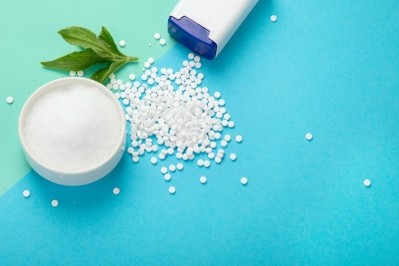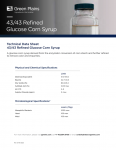Sugar reduction hits a wall in the US, as consumers prefer caloric sweeteners, IFIC finds

“We hit this wall of [sugar] reduction ... in terms of what we are achieving in the consumption of sugar. The average American is still not meeting that recommendation for less than 10% of calories from added sugar. And one of the conundrums that we see is that with low- or no-calorie sweeteners being a tool ... to help people offset their preference for sweet tastes with the amount of added sugar they consume, we continue to see a preference for the caloric sweeteners,” Kris Sollid, senior director of research and consumer insight for IFIC, told FoodNavigator-USA.
Consumers are split on consuming low- or no-calorie sweeteners
IFIC interviewed 1,000 US consumers in April 2024 about their perception on low- or no-calorie sweeteners and how their consumption habits changed in the last year for its annual consumer survey on sweeteners. Since IFIC’s 2023 sweetener report, sweeteners like aspartame and erythritol have been in the news with some researchers questioning the safety of the two ingredients.
Last July, the World Health Organization’s International Agency for Research on Cancer declared aspartame a possible carcinogen, while the Joint FAO/WHO Expert Committee on Food Additives maintained its suggested daily intake limit. Two months prior, a study appearing in the journal of Nature Medicine suggested a potential link between erythritol and the risk of heart attack and stroke, with trade groups questioning the study's methodology.
However, these high-profile stories did little to change perceptions and behaviors of sweeteners, as this year’s results mirrored results found in 2023, Sollid noted.
More than a third (34%) of Americans said their low- or no-calorie sweeteners consumption levels stayed the same in April 2024 as in 2023, while 30% said they did not consume any low- or no-calorie sweeteners. Additionally, 33% said they changed their low- or no-calorie sweeteners consumption in some way, with 11% decreasing and 10% increasing consumption.
Low or no-calorie sweeteners seen for their weight-management benefits
Consumers who consume more low- or no-calorie sweeteners do so for weight management reasons, Sollid explained. Almost a third of consumers (29%) said they increased consumption of low- or no-calorie sweeteners to try to lose or maintain weight, while 25% were changing their eating or drinking habits, and 21% heard they were safe to consume.
“With the low and no-calorie sweeteners, stevia and monk fruit seem to have that glow to them among consumers that they are from a natural source, therefore they are healthier, therefore they are safer." — Kris Sollid, senior director of research and consumer insight for IFIC
“[Sugar reduction] is often a part of a weight loss or weight management plan that people unemployed. They are looking to reduce calories. They are hearing messages about sugars and other forms of calories. So, as a tool or one solution to help them do that, we do see that people tend to associate the benefits of weight management with low- and no-calorie sweeteners,” Sollid said.
Most consumers (56%) said that some people can take advantage of health benefits from low or no-calorie sweeteners, including people who have diabetes or obese individuals, Sollid said.
‘Stevia and monk fruit seem to have that glow to them among consumers’
IFIC asked consumers to rate out of 10 how likely they would consume a specific sweetener — 1 being the least likely to consume and 10 being the most likely — to consume to determine sweetener preference.
Honey, brown sugar and sucrose were the most popular with an average score of 7.3, 6.6 and 6.3, respectively, whereas stevia received an average score of 4.8 and monk fruit an average of 4.3. At the bottom of the list, allulose and xylitol were tied with an average rating of 3.5, while erythritol, acesulfame potassium and maltitol were tied at 3.4.
“With the low and no-calorie sweeteners, stevia and monk fruit seem to have that glow to them among consumers that they are from a natural source, therefore they are healthier, therefore they are safer,” Sollid said. “I am not sure familiarity plays a role when we are talking about those recognized types of sugars, but certainly when we get down into the sugar alcohols, you are starting to feel the effects of some of that lack of familiarity.”
Additionally, consumers who were reducing or stopping their intake of low- or no-calorie sweeteners largely did so because of safety concerns about the specific ingredients. Nearly a third (31%) said they were reducing their intake because of safety concerns, just behind those changing their eating or drinking habits at 36% of survey respondents.

















